Japchae recipe with chewy Korean glass noodles, beef, and colorful veggies in a savory-sweet sauce. This easy stir-fry skips boiling and extra pans but delivers authentic taste—perfect for busy nights, meal prep, or Korean celebrations.
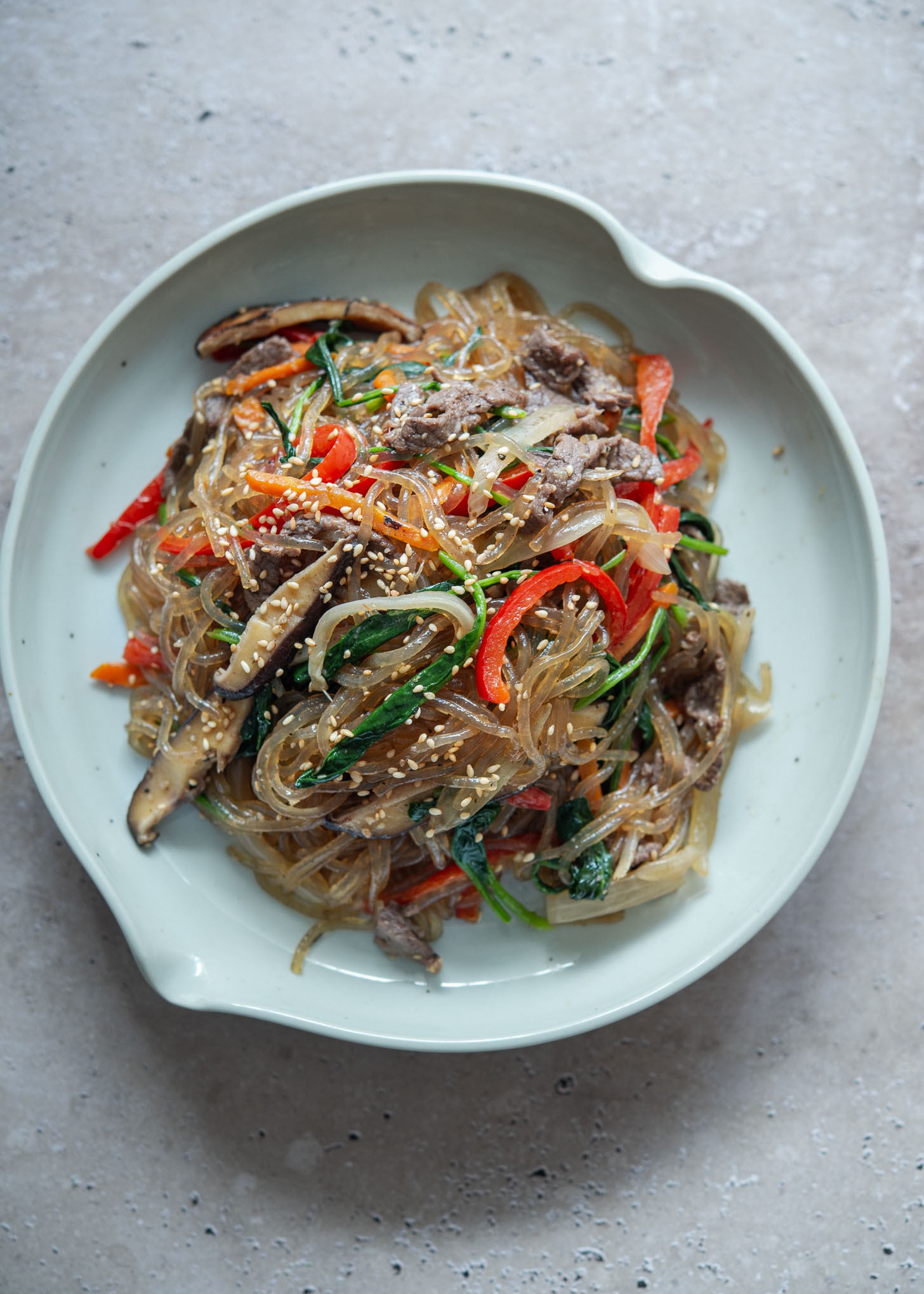
I still remember the first time I learned how to make this Japchae recipe the easy way. I was in college in the U.S., homesick and craving something familiar, when a kind Korean professor and his wife invited me over for dinner.
In her kitchen, she showed me how to make Japchae with just one pan—no boiling, no juggling a dozen dishes—and it still tasted just like home.
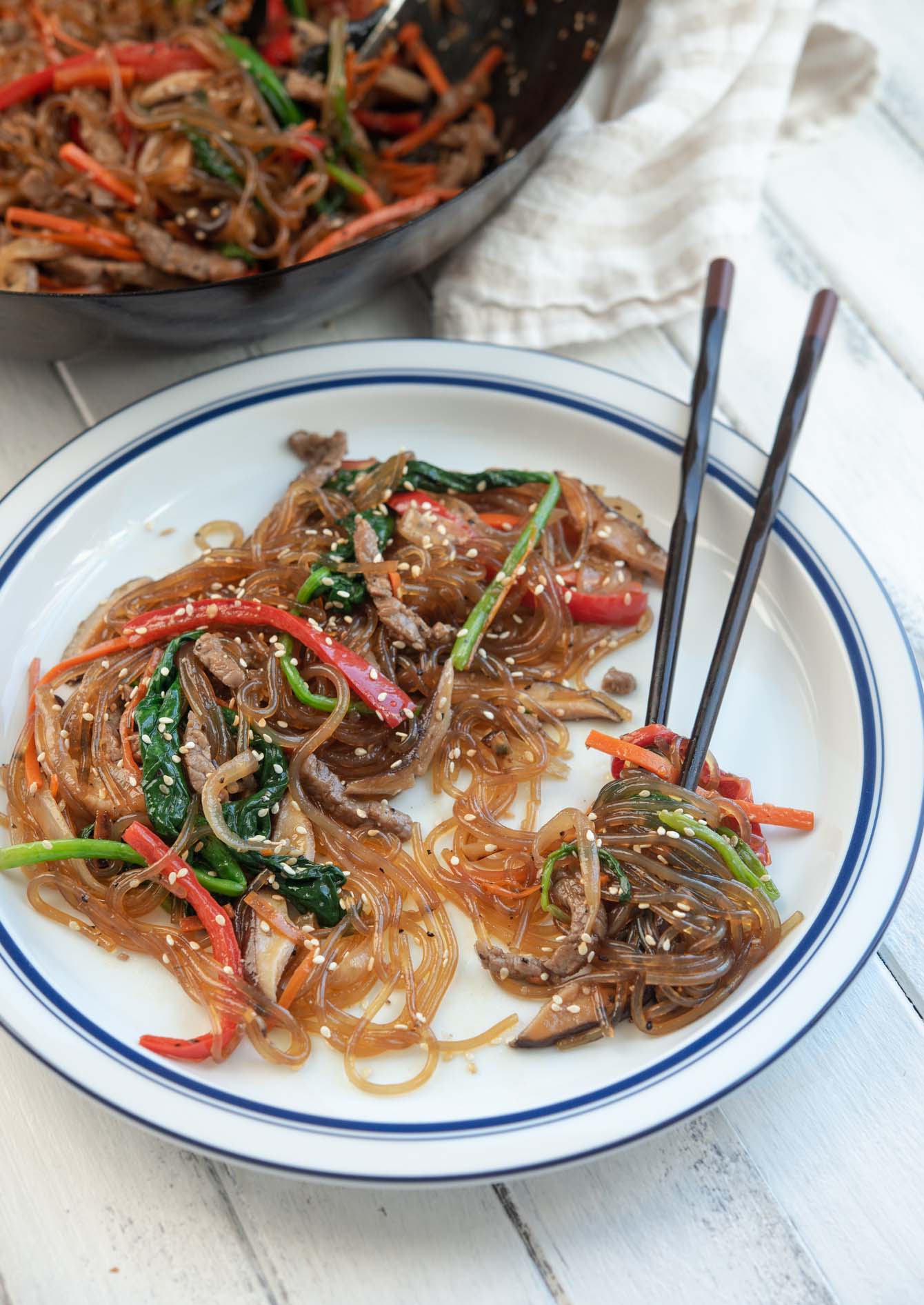

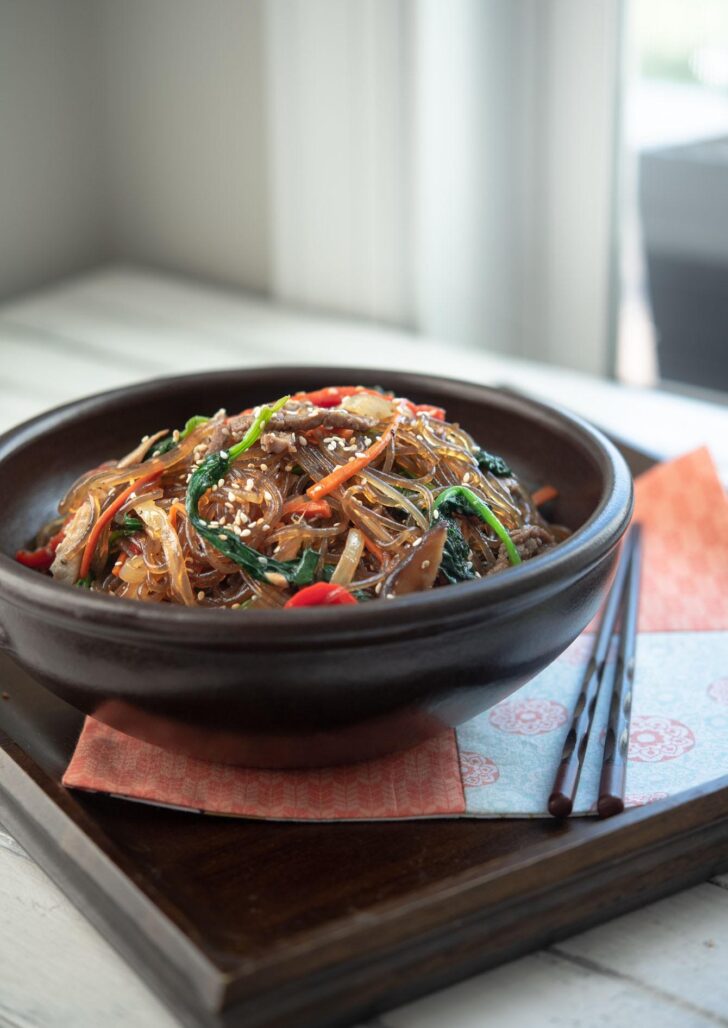

Get new recipes via email:
Ever since then, this simplified Korean noodle stir-fry with chewy glass noodles, beef, and veggies has been my go-to—whether I need a quick Korean dinner or a potluck dish to share. It’s easy, forgiving, and always gets devoured.
Why You’ll Love This Japchae Recipe
- Less hassle, same great flavor. No need to boil the noodles—just soak and stir-fry for that chewy, authentic texture with fewer steps.
- One-pan approach. This streamlined method lets you cook everything in one pan without compromising the layered flavors Japchae is known for.
- Flexible and forgiving. You can make it with beef, go vegetarian, or swap in whatever vegetables you have on hand—it always turns out delicious.
- Weeknight-friendly. It comes together quickly, making it just as perfect for a casual dinner as it is for special gatherings.
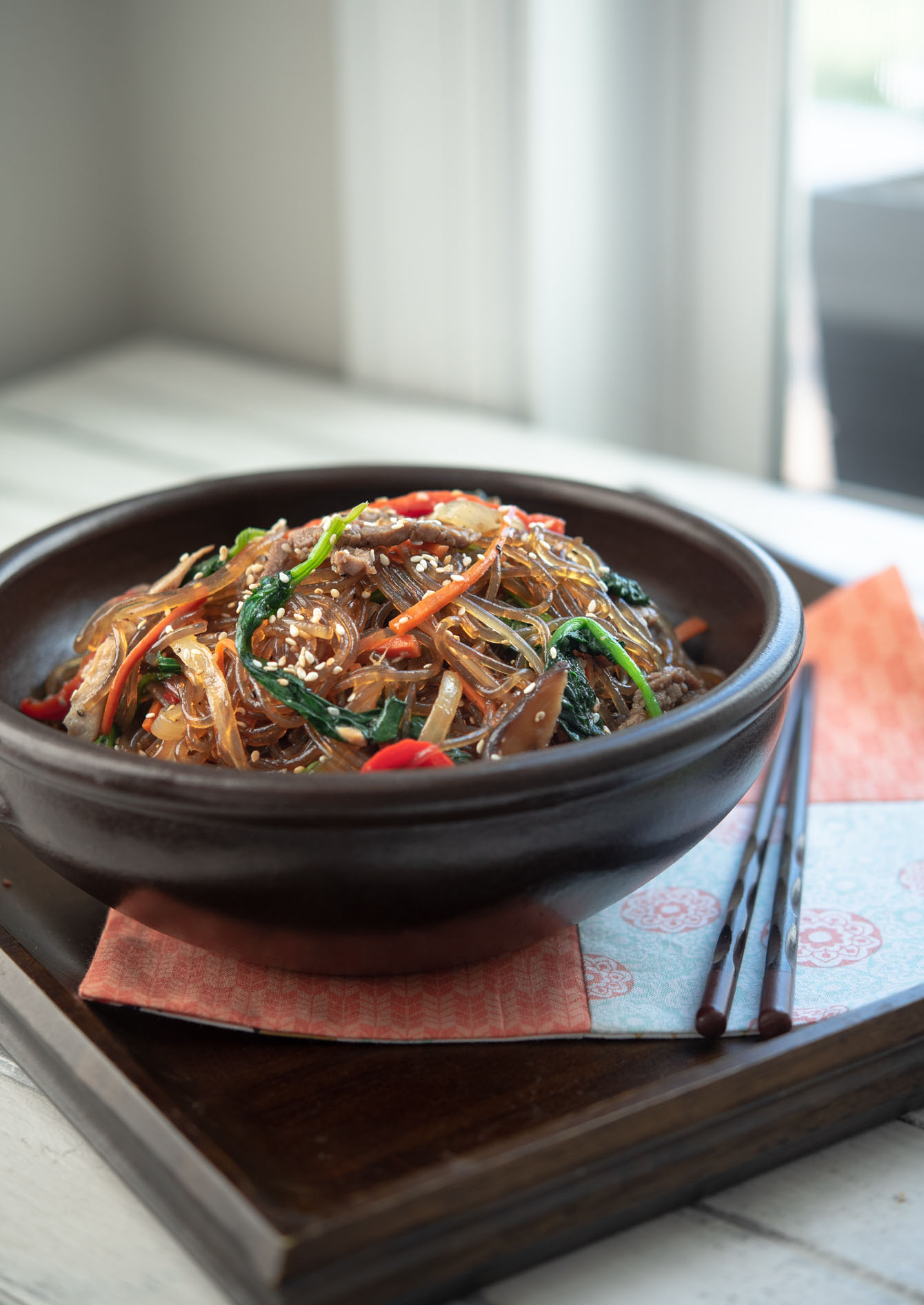

Key Ingredient Notes
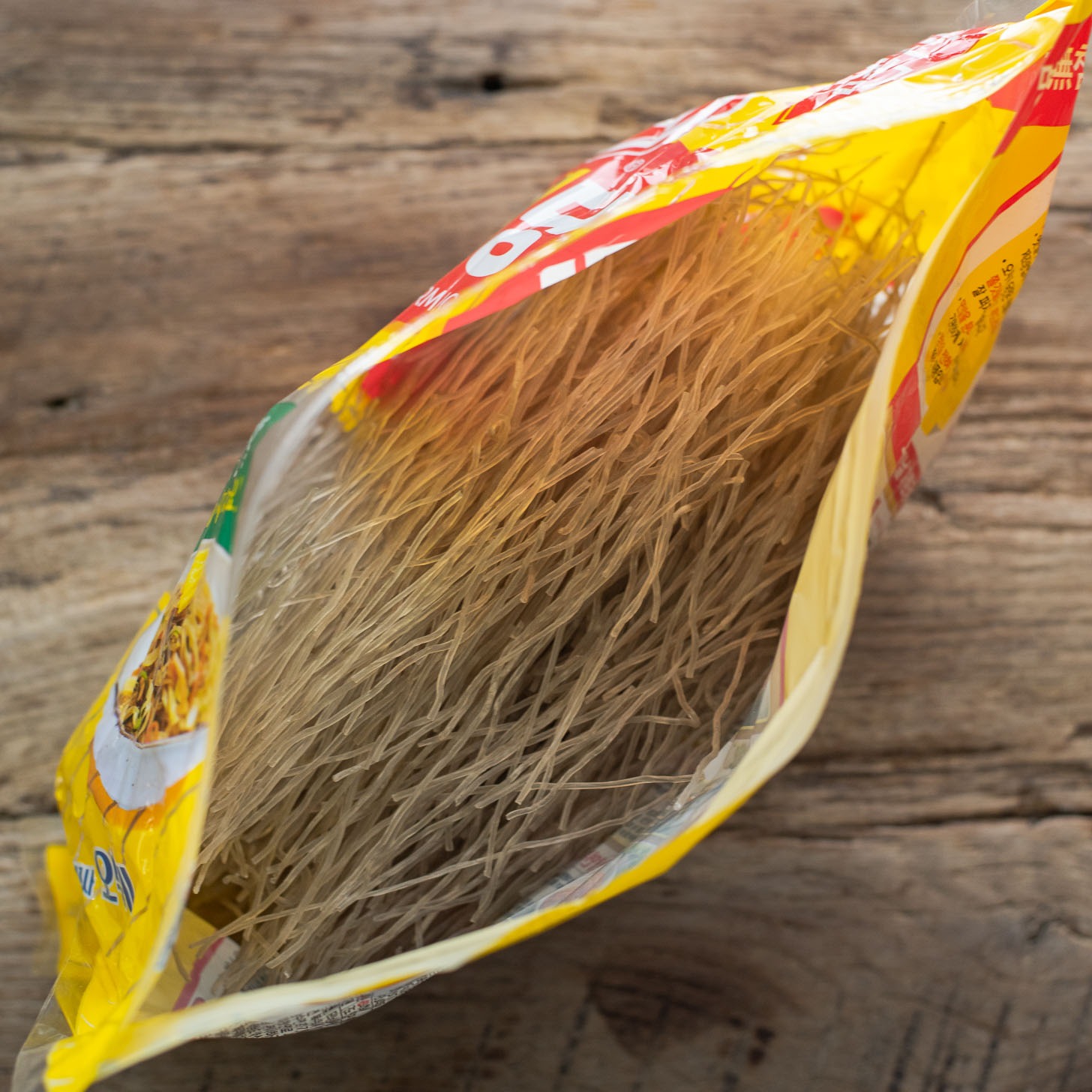

- Dangmyeon (Korean sweet potato noodles): These chewy glass noodles are essential for Japchae. I soak them in hot water to soften—no boiling needed, which means one less pot to clean! You’ll also find these noodles in dishes like Andong jjimdak (Korean braised chicken) and Galbitang (beef rib soup) for a different twist.
- Beef: I recommend using thinly sliced sirloin or striploin for their tender texture. A quick marinade with soy sauce, sugar, garlic, and sesame oil brings flavor to the meat—and it’s a step you don’t want to skip.
- Vegetables: Think color and contrast. Onions, carrots, bell pepper, mushrooms, and spinach are popular picks. I’ve found it works best to stir-fry the firmer veggies first, then add the mushrooms and spinach at the end so the greens stay bright and don’t overcook.
- Japchae Sauce: The sauce is all about balance—sweet from the sugar and mirin, savory from soy sauce and garlic, and that nutty finish from sesame oil. I always mix it first so it’s ready to coat the noodles right when they hit the pan. Timing matters—it helps the noodles absorb all the flavor evenly.
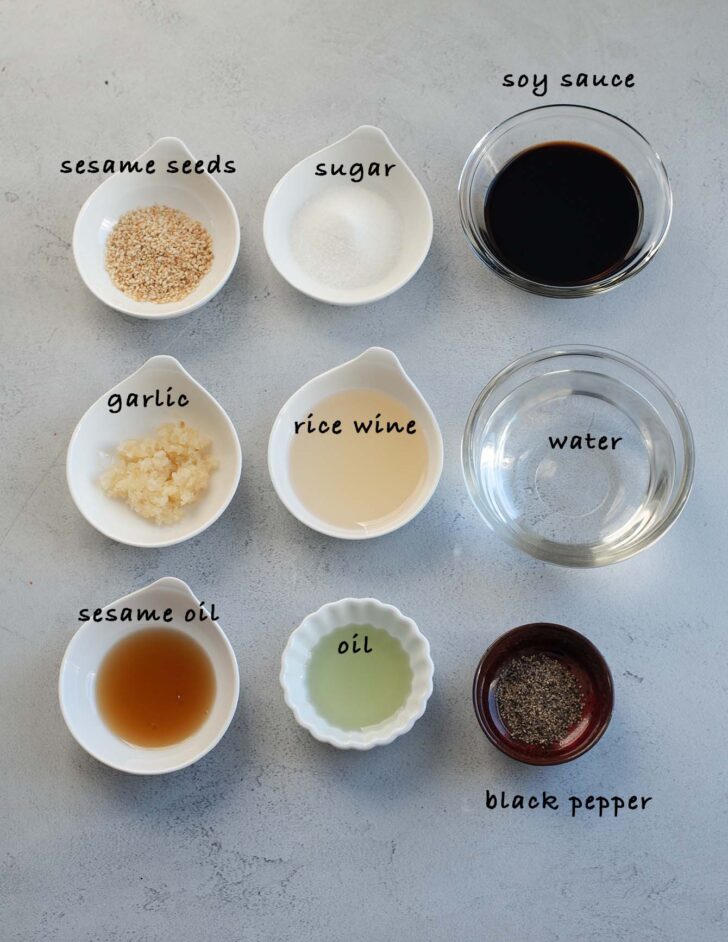

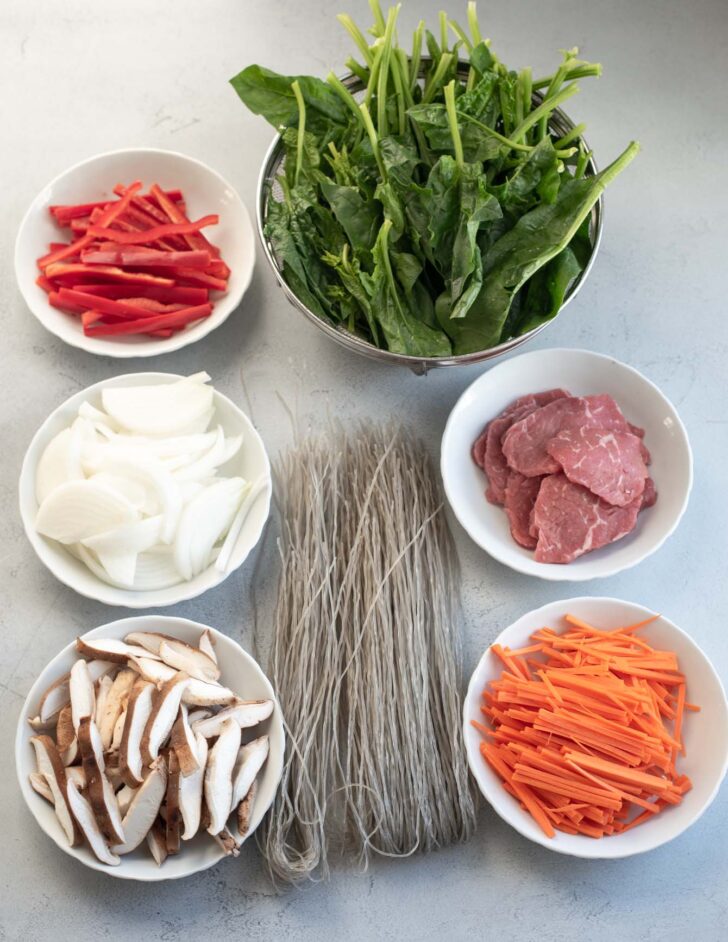

How to make Japchae (Step-by-Step)
These step-by-step photos are here to guide you visually through the recipe. For exact measurements and full instructions, scroll down to the printable recipe card below.
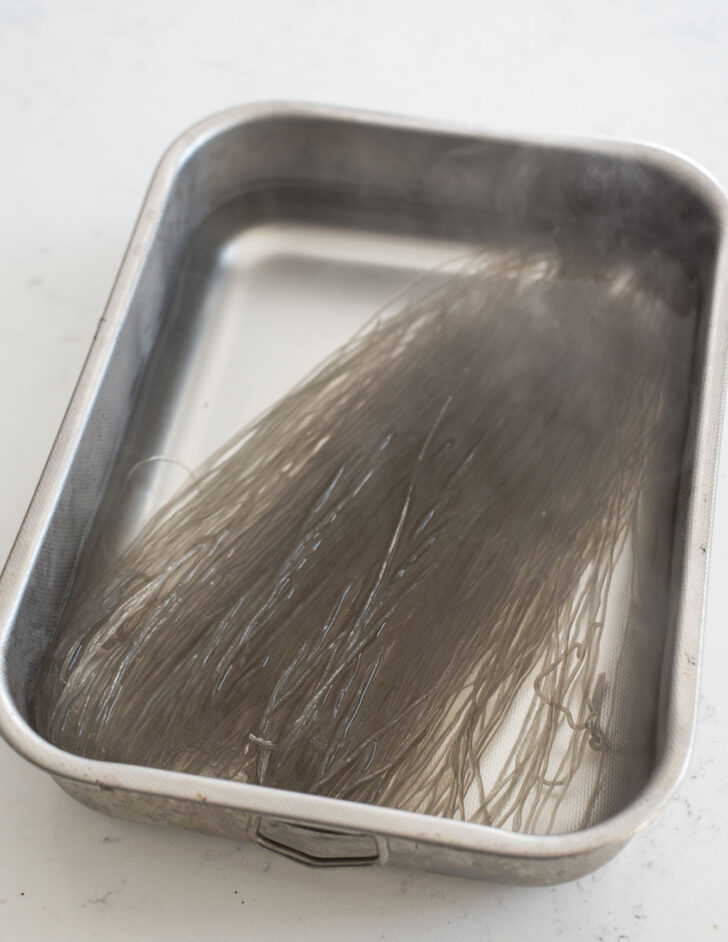

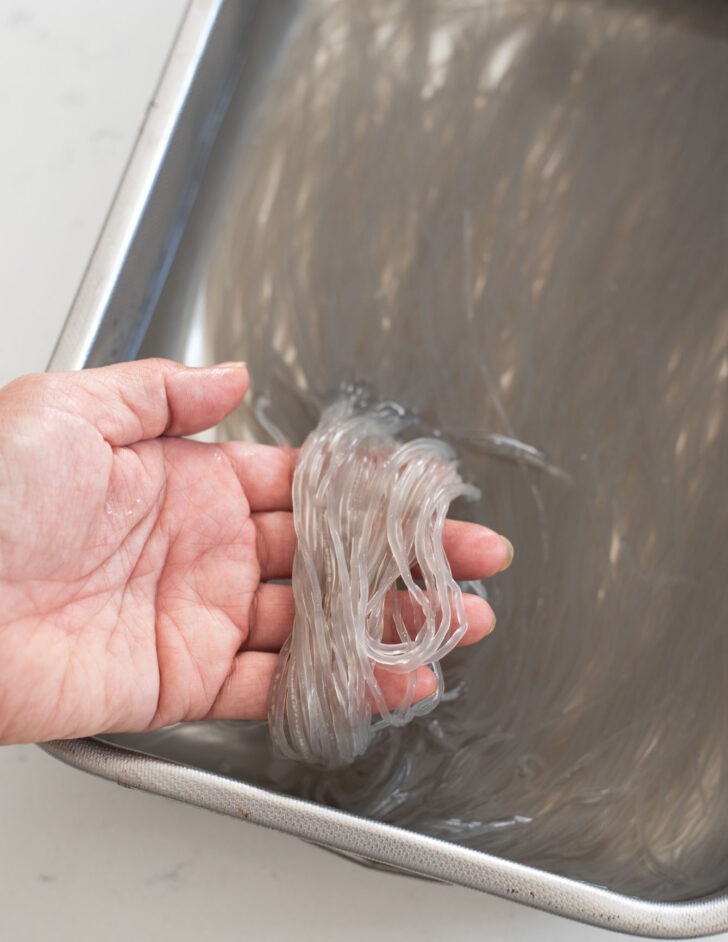

1. Soak noodles in hot water for 15 minutes. Drain and set aside.


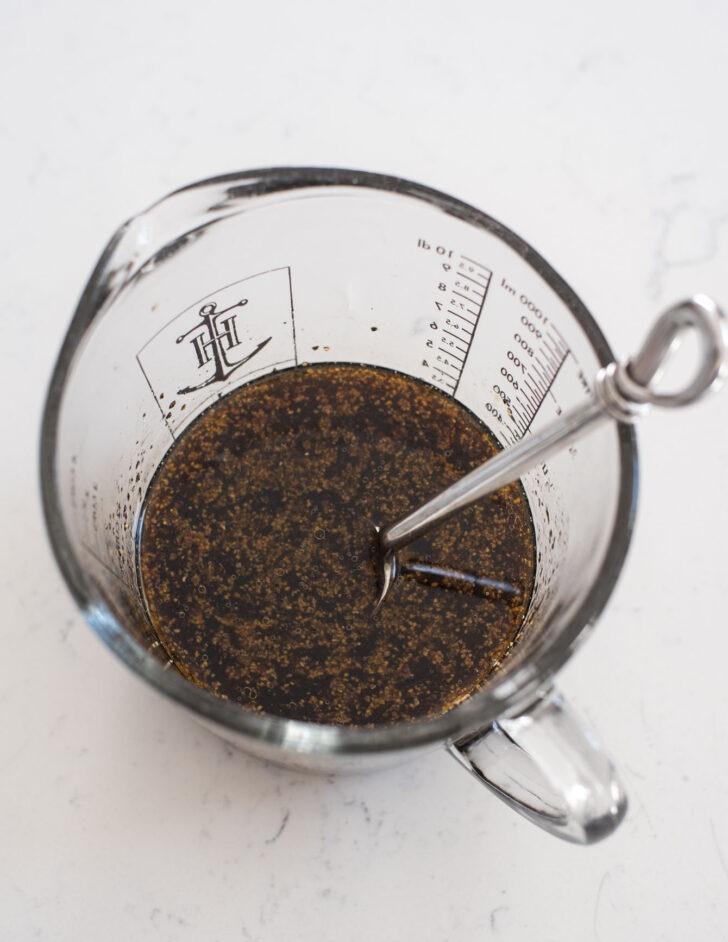

2. Marinate beef and mix the sauce.
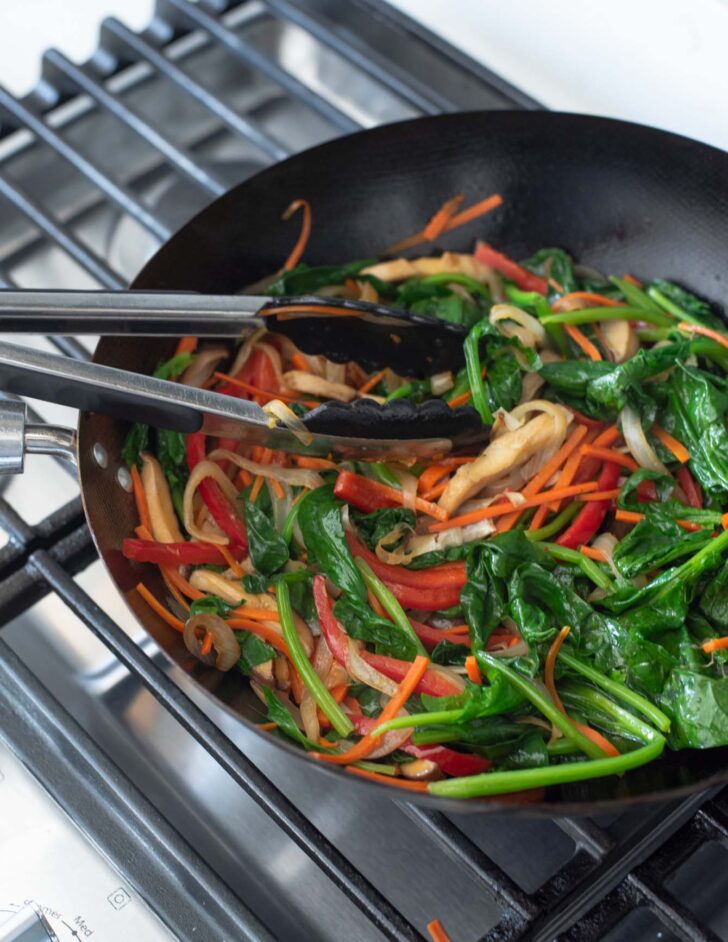

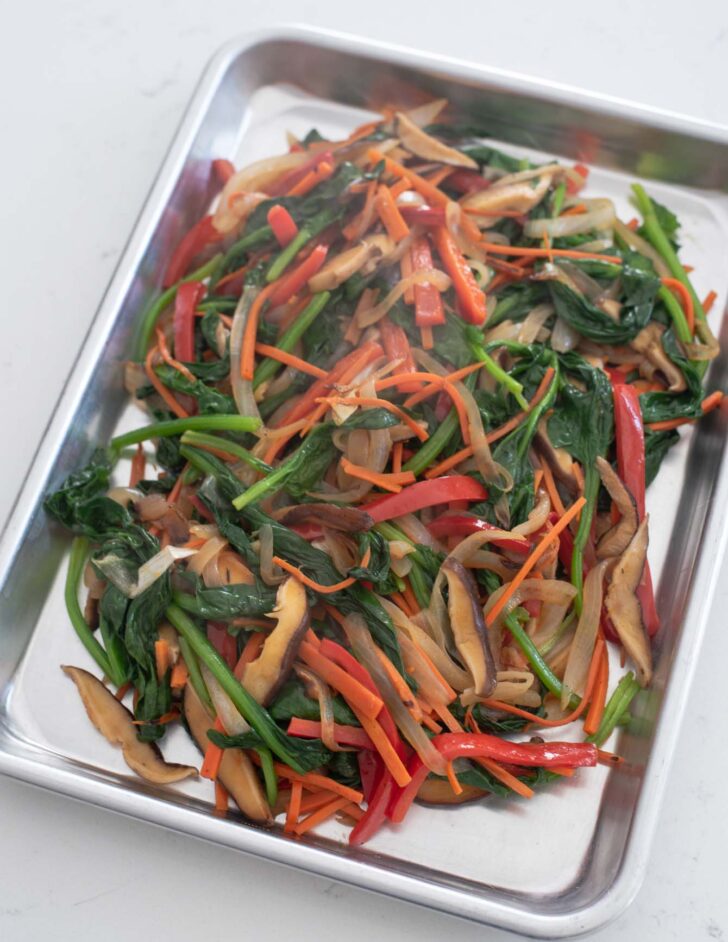

3. Stir-fry vegetables in stages. Cool them on a platter.
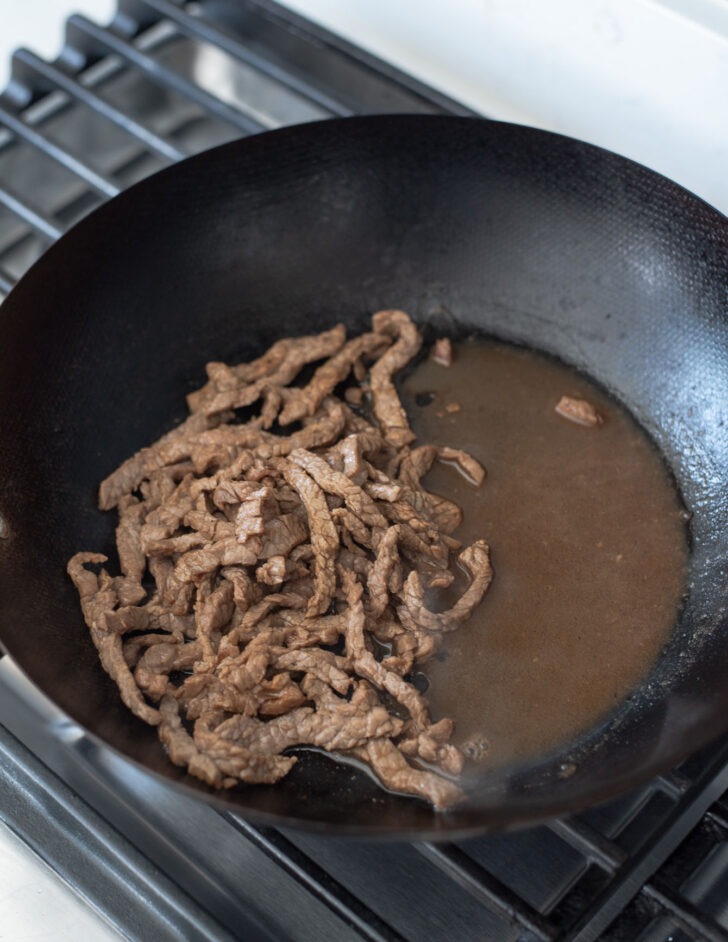

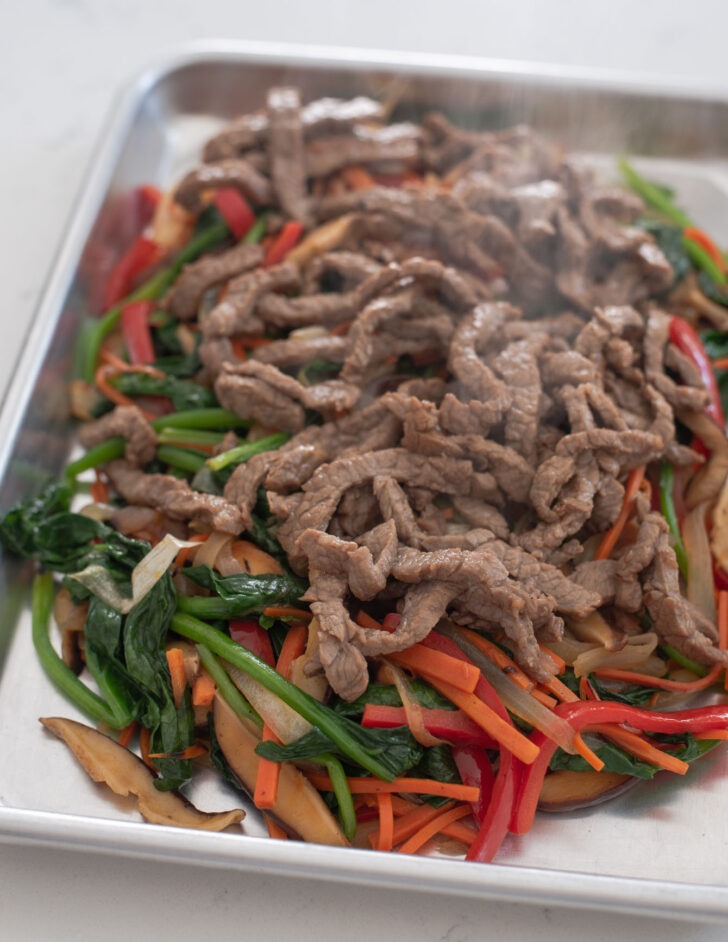

4. Cook the beef in the same pan. Set aside with veggies.
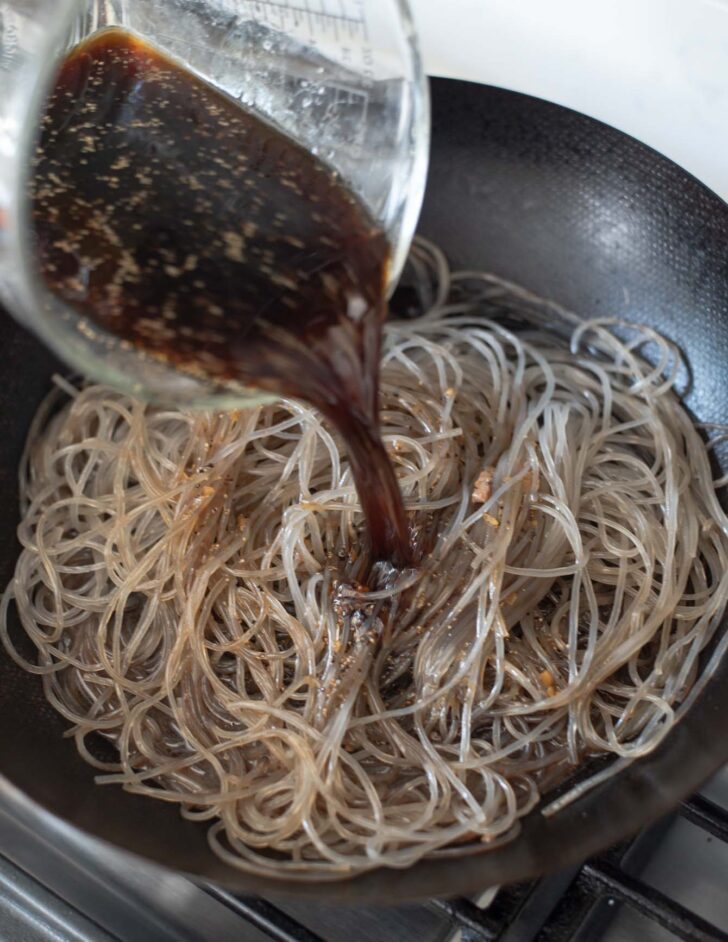

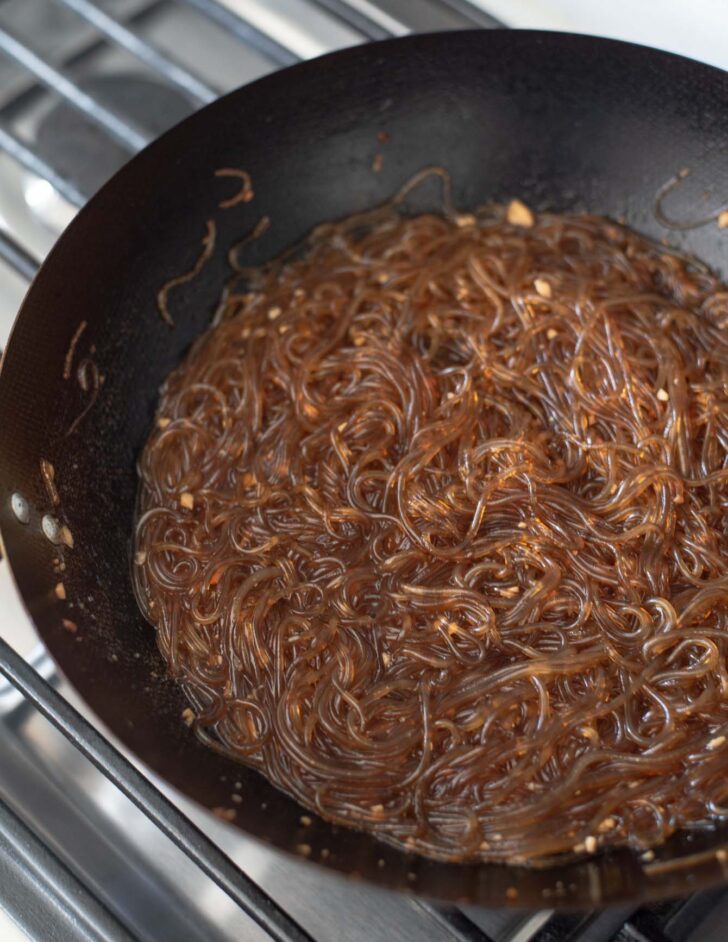

5. Add noodles to pan with beef juices and sauce. Stir-fry until tender.
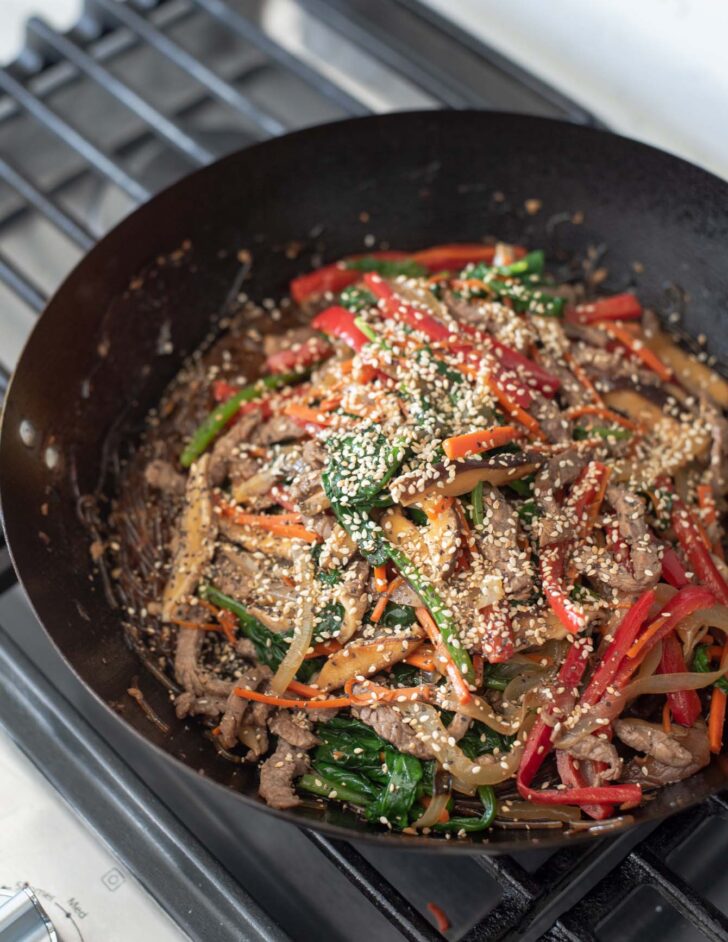

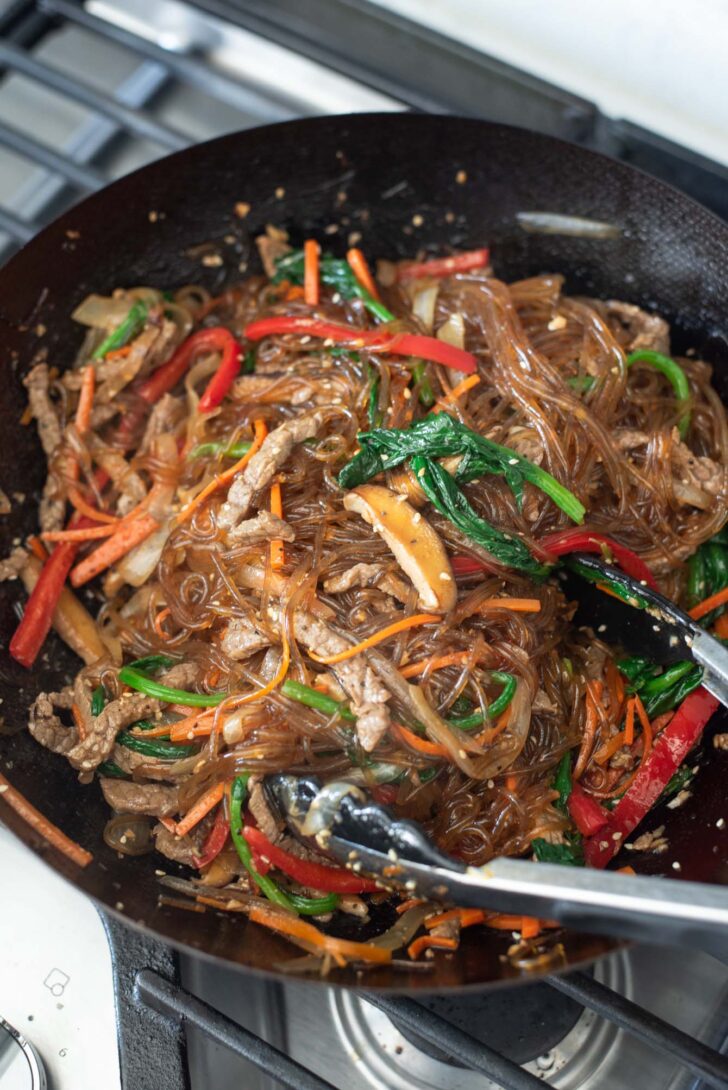

6. Combine everything, add sesame oil and seeds, and toss well.
Quick Tips
- Let vegetables and beef cool before mixing. This helps preserve the texture of the noodles by avoiding steam-induced sogginess—a lesson I learned after years of making overly soft Japchae.
- Use scissors to cut long noodles. Snipping dangmyeon into shorter lengths makes tossing and serving much easier, especially if you’re sharing the dish family-style.
- Finish with sesame oil and seeds. That final drizzle of sesame oil and sprinkle of toasted sesame seeds adds a nutty aroma that rounds out the entire dish.
More Korean Noodle Dishes to Try
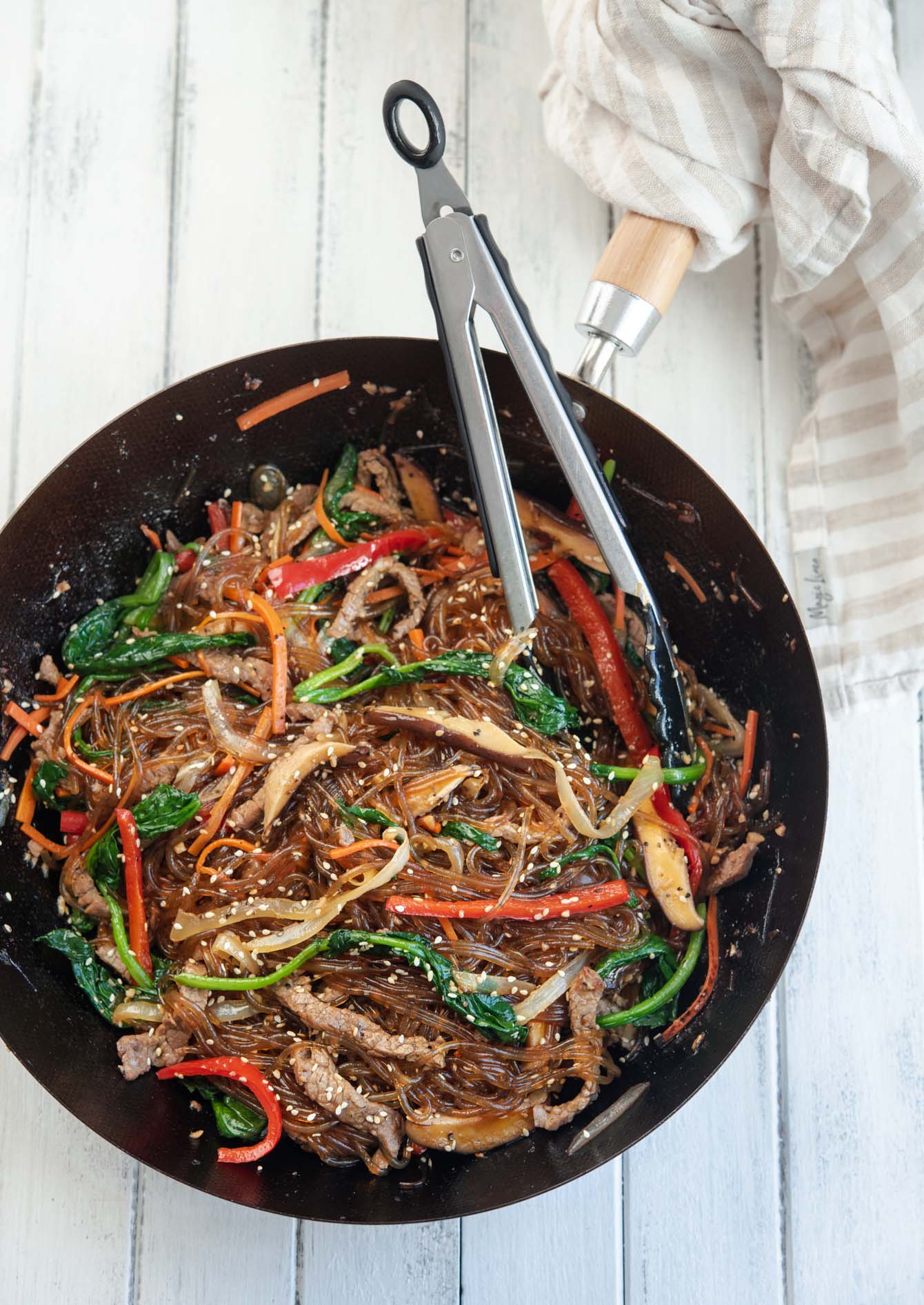

Originally published in March 2010. This post has been updated with new photos and improved step-by-step details to help you make Japchae easily at home—while preserving its authentic flavor.
Love this recipe? Rate it and share your experience in the comments below! On Instagram? Tag me to showcase your creation. For more delicious recipes, subscribe to our newsletter!
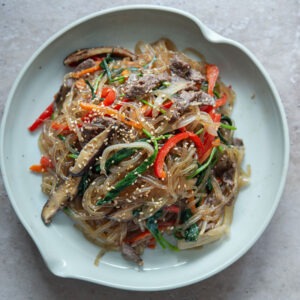

Japchae (Korean Glass Noodle Stir-Fry)
Easy Japchae recipe with chewy Korean glass noodles, tender beef, and colorful vegetables in a savory-sweet sauce. Quick to make with authentic taste in every bite.
- 8 oz (226 g) Korean glass noodles (dangmyeon)
- 6 oz (170 g) beef sirloin, or pork loin. See note below for the vegan/vegetarian option
- 2 tbsp oil
- 1 medium onion, thinly sliced
- 1 medium carrot, cut into thin matchsticks
- 1 small red bell pepper, thinly sliced
- a few pinches salt
- 5-6 shiitake mushrooms, sliced
- 1 bunch (about 6 oz, 170 g) spinach, cleaned
- 1 tbsp sesame oil
- 1 tbsp toasted sesame seeds
To cook Japchae
-
Heat 1 tablespoon oil in a large skillet or wok over medium high heat. Add onion, carrot, pepper, and a pinch of salt; stir-fry until soft but have a slight crunch. Add sliced shiitake mushrooms and another pinch of salt. Continue to stir-fry until soft. Add spinach at the end and stir-fry until spinach is wilted. Remove the skillet from the heat and transfer the vegetables to a large plate to cool.
-
Reheat the pan over high heat with the remaining 1 tablespoon oil, add the beef (or pork) and stir-fry until fully cooked. You will see the juice coming out from the meat. Transfer the meat to the large plate with the reserved vegetables, reserving the juice in the pan.
-
Add the drained glass noodles to the pan with the meat juices. Pour the japchae sauce over the noodles and toss to combine. Let the noodles cook over medium heat until they are soft and the sauce liquid is mostly absorbed into the noodles, about 3-4 minutes.
-
Reduce the heat to low. Add the vegetables and meat back to the pan over the noodles. Add sesame oil and sesame seeds. Toss well and adjust seasoning to taste.
Expert Tips:
- Let cooked vegetables and beef cool slightly before mixing—this keeps the noodles from getting soggy.
- Use kitchen scissors to snip long noodles into manageable lengths.
- Don’t skip the final drizzle of sesame oil and sesame seeds—it enhances aroma and taste.
- To make this Japchae vegan or vegetarian: omit the beef (or pork) and the meat seasoning step in the recipe.
Storage & Reheating:
- Store in an airtight container in the fridge for up to 4 days.
- Reheat in a skillet with a splash of water or oil to loosen noodles and restore flavor.
Calories: 326kcal, Carbohydrates: 46g, Protein: 9g, Fat: 12g, Saturated Fat: 1g, Polyunsaturated Fat: 3g, Monounsaturated Fat: 6g, Trans Fat: 1g, Cholesterol: 16mg, Sodium: 865mg, Potassium: 260mg, Fiber: 1g, Sugar: 9g, Vitamin A: 2103IU, Vitamin C: 18mg, Calcium: 52mg, Iron: 1mg
